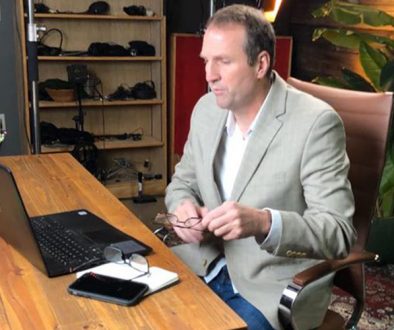Addiction Debate Goes Mainstream…
Much has been written recently on addition driven mainly by the media storm around the “opioid epidemic”. There are articles in mainstream press and the attention has brought this issue out of the shadows. The debate has escalated around the etiology of addiction. There are competing camps popping up related to the most accurate label for addiction. These are important discussions. Understanding the issue is central to society’s response. Our outlook on any given problem will guide our response to that problem. At a global level, outside of those professionally or personally touched by addiction, the moral model remains our default explanation for addictive behavior. The moral model holds that addiction is essentially bad behavior and the individual needs to use willpower to make better decisions. Public opinion polls show 44% to 63% of Americans view addiction this way (CASA, 2011). If you believe in the moral model you believe addicts should be locked up. Clearly America sees addiction as a moral issue. Incarceration remains the preferred systemic response. However, it is obvious that addiction goes way beyond “bad people doing bad things”.
In direct contrast to the moral model, the disease model states that addiction is a brain disease. A complex neurobiological process in which the regulation of key transmitters (dopamine) becomes dysfunctional. This, along with the over-stimulation of the naturally occurring craving mechanism glutamate, leads to substance use despite clear consequences, substance seeking behaviors and the overwhelming pre-occupation or mental obsession associated with addiction. The American Society for Addiction Medicine (ASAM) describes addiction as follows:
Addiction is a primary, chronic disease of brain reward, motivation, memory and related circuitry. Dysfunction in these circuits leads to characteristic biological, psychological, social and spiritual manifestations. This is reflected in an individual pathologically pursuing reward and/or relief by substance use and other behaviors.
Addiction is characterized by inability to consistently abstain, impairment in behavioral control, craving, diminished recognition of significant problems with one’s behaviors and interpersonal relationships and a dysfunctional emotional response. Like other chronic diseases, addiction often involves cycles of relapse and remission. Without treatment or engagement in recovery activities, addiction is progressive and can result in disability or premature death.
If you agree with the disease model you, theoretical, believe that addiction should be treated as a medical issue. This would imply that addiction is addressed within the bounds of our healthcare system. Addiction would be viewed the same as any other disease. A doctor would assess, diagnosis and refer for treatment. Hospitals would provide care. However, America find itself in the middle of a strange paradox. On one hand, we proclaim the disease model and on the other we refuse to treat it within the healthcare system. The divide between general healthcare and addiction treatment creates confusion. The implication is that people with substance use disorders are a special group that need to be isolated from general healthcare and reprogrammed. The facts are (despite the reality that more than 2/3 of people with addiction were in contact with medical personnel the past year) most physicians and health professionals do not identify or diagnose the disease or know what to do if the issue is uncovered (CASA, 2012). I therefore contend that the disease concept is a feel-good term serving merely as window dressing for a society that is frightened to look addiction in the eye. We prefer to keep it locked in a closet and out of sight out of mind. Bringing addiction into the healthcare system would improve results but require major shift in policy, reimbursement, and turf. The status quo would be upended.
There is one area of exception as it relates to healthcare integration. It is in relation to medication assisted treatment. For example, physicians are able to become certified as prescribers of buprenorphine. They can then provide medication to address opioid dependence. This is an area that is going to receive more attention moving forward. Regulations have been changed to support more patient engagement. Doctors can now serve up to 275 patients instead of maximum of 100. In addition, funding is changing. Subsidies are coming to support those who cannot afford medication assisted treatment. Insurance companies are liberally reimbursing suboxone treatment in parts of the country. Surely this will expand all corners of the nation.
Maia Salvitz’s Unbroken Brain challenges the conventional disease model. However, hers is not a return to the shaming and blaming moral model. Instead Salvitz holds that addiction is closer to a learning disorder than a degenerative disease. Salvitz’s position is that those of us who became addicted did so because of misfiring cause and effect system in the brain. Our neurotransmitters become confused and we are unable to prioritize or make rational decisions where the substance is concerned. I will not go into great detail and would encourage you to read Salvitz’s Unbroken Brain. However, I view her interpretation as merely a reframing of the neurobiological disease model. Both concern the same parts of the brain and both acknowledge fundamental change in processing that occurs in the brain.
The significance of Slavitz’s position is not so much etiological insight. The significance is the potential impact this viewpoint has on treatment response and recovery services. The most obvious implication: if it is a learning issue then the person can potential unlearn the behavior. Furthermore, Slavitz’s position opens the door for an expansion of new approaches to addressing addiction. A person with addiction does not necessarily require the old paradigm of treatment plus 12-step recovery meetings. There are other pathways to recovery. Professional providers can support creative solutions including harm reduction oriented interventions. Medication assisted treatment also is held in high regard in this model and seen as an under-utilized intervention. Salvitz uses an analogy of ADHD in some of her work. She talks about how medication is effective in addressing this issue and allowing the individual to more fully engage in the learning experience. In a similar way medication could be used to support recovery.
However, there is a dilemma that springs from this perspective, it seems logical that addiction as a learning issue eliminates addiction as a healthcare issue. It can’t be both. What are the practice implications if addiction moves further away, in terms of semantics, from the disease model? Slavitz’s position is unlikely to gain traction due to the firmly entrenched “theoretical disease model” that exists in the treatment industry today. It is very unlikely that anyone will take her seriously on a mass scale. If open-mindedness did exist and this view was given serious consideration reconciliation with healthcare would prove difficult.
Another model that has received a great deal of attention is Johann Hari’s addiction versus connection theory famously presented through his 2015 TED talk entitled “Everything You Know About Addiction Is Wrong”. The short story version of Hari’s work is the following: Rat park was an infamous study where scientists got some rats strung out on cocaine resulting in a group of rats who refused to eat, have sex, reproduce or do anything other than cocaine. They then get some other rats strung out but create opportunity for connection with other rats and create a “park” where these critters can frolic about. This second group chooses to eat, drink, reproduce rather than use cocaine.
The conclusion was connection mitigates the effects of addiction. Hari also talks about the phenomena of apparent transformational change that occurred with Vietnam vets and heroin addiction. It seems that the overwhelming majority of Vietnam vets stopped using heroin upon their return to the states. Again, this was attributed to the connection that occurred back in their native country. Of course, the talk and Hari’s thesis contains much more depth and detail. However, the overall emphasis is on lack of connection as the problem and connection as a major part of the solution.
The practice implications of connection versus addiction are interesting. It is a widely-held belief that recovery involves community. Therefore, the emphasis on connection makes sense to many in the addiction treatment and recovery world. However, over-emphasis on the connection presents a challenge to the disease model. There have been some who criticized Hari for removing the neurobiology of the process. Hari is quick to say that was never his intent. At a policy level this theory could easily lead to less emphasis on integration into healthcare. At the same time connection-theory could lead to an increase emphasis on recovery support as recovery support is all about connection. Obviously, this appeals to me on a personal and professional level.
There are many other perspectives on addiction these are simply the most commonly held. It is very interesting to see addiction discussed so openly. Hari’s TED talk yielded 15 million or more views. The danger is confusion on the part of the general public. If we don’t have agreement on what addiction is then we will automatically default to the moral model. That is the position people are most comfortable with and the position people are naturally drawn to. I believe addiction is a brain issue. Call it a disease or disorder or “brain problem”. The “theoretical” disease model is not going anywhere soon, it is firmly entrenched. However, it could be threatened based on two factors:
- Our societal practices do not reflect a belief in the disease model. In other words, we call it a disease but refuse to treat it within healthcare.
- Our current response, which is based in theory on the disease model, is inadequate (CASA, 2012). In other words, we have not slowed addiction down in the slightest.
This leaves us ripe for an alternative theory. I fear it may be a doubling down on the moral model.



November 22, 2016 @ 11:13 pm
Great article. Although I got sober using a 12-step program, it is clear it’s not for everyone. These new approaches MUST get out to the mainstream! Keep up the energetic work. And Bravo! for FAVOR.